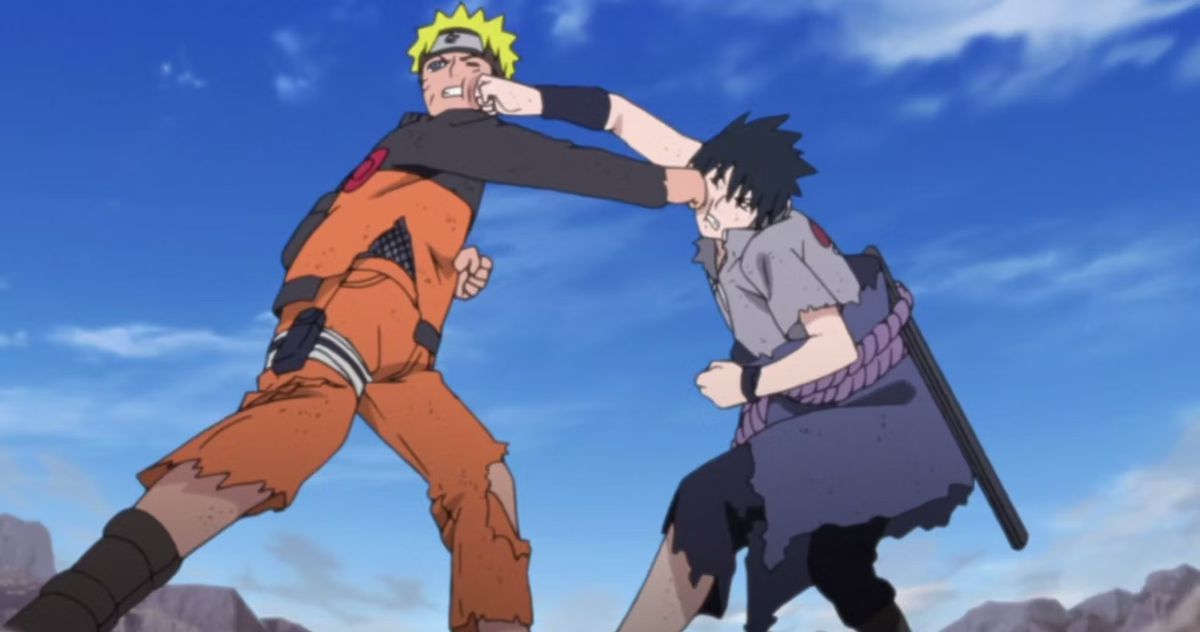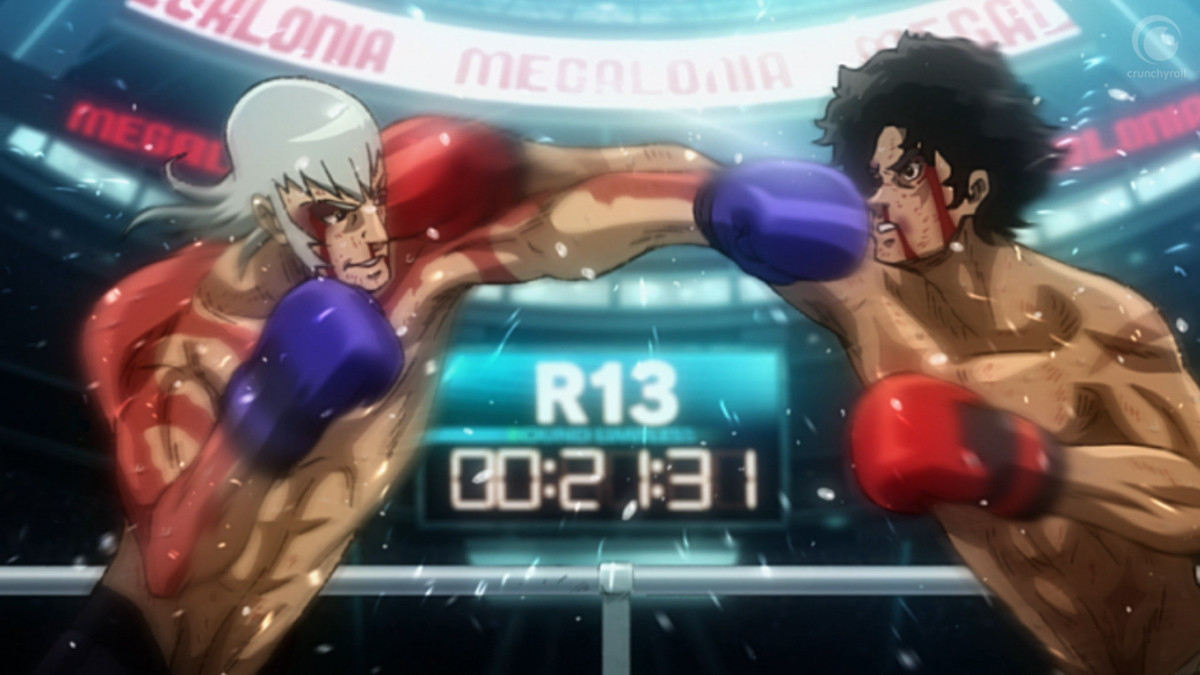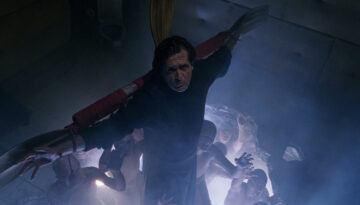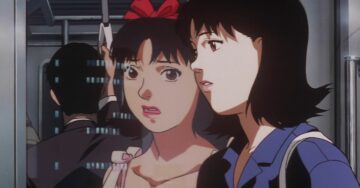Anime is one of the most versatile variations on the medium of animation in the world. From a niche cultural export to a bona fide global phenomenon, Japanese animation has left an indelible mark not only on Western animation, but Western film as a whole.
In an interview with Polygon, Creed III star and director Michael B. Jordan cited anime as a principal influence on the writing and cinematography behind his directorial debut. Jordan specifically singled out an intense fight between Naruto and his rival Sasuke from Naruto: Shippuden as an inspiration for the climactic confrontation between protagonist Adonis Creed (Jordan) and his nemesis, Damian “Diamond Dame” Anderson (Jonathan Majors), in the film. The moment stands out: During Adonis and Damian’s titanic bout, the two childhood friends turned adversaries punch each other square in the face at the same time.
“That punch is Naruto and Sasuke,” Jordan told Polygon. “[T]hat punch has happened a few times in anime. […] But for me, [the Creed III scene] was about the relationship between two brothers, so the relationship between Naruto and Sasuke was where the inspiration for that relationship kind of stemmed from.”


From the death-defying dogfight acrobatics of the “Itano circus” to the plaintive pastel-chalk aesthetic of “postcard memories,” anime — like any other stylistically distinctive take on the medium of film and animation — boasts an array of unique narrative and visual callbacks upon which its aesthetic language is founded. While Jordan specifically pointed out Naruto, and to a lesser extent Dragon Ball Z, as the inspiration behind that pivotal scene in Creed III, the trope itself dates back further than either of those series, and in fact originates from not only one of the film’s other cited anime influences but technically predates the phenomenon of anime altogether. For anime fans, the “cross counter” refers to a moment when a confrontation between two fistfighters of equal skill culminates with one of the combatants countering a hook punch by throwing a punch along their adversary’s arm, resulting in the two simultaneously punching each other in the face.
Within the context of anime, the trope dates as far back as 1970’s Ashita no Joe (aka “Tomorrow’s Joe”), the iconic boxing anime directed by Osamu Dezaki about a young drifter’s hard-won journey to become a heavyweight boxing champ. Several instances of the cross-counter punch appear throughout the course of the anime’s 79-episode run, as well as in the 1980 anime film that used reedited and reanimated footage from the series. Combined with the postcard memories trope — also attributed to Dezaki via his work on such anime as Ashita no Joe, the 1973 sports romance anime Aim for the Ace!, the 1982 sci-fi pulp anime Space Cobra, and more — the cross-counter trope left an indelible impression on a generation of Japanese youth who would grow up to become some of the most influential creators of anime in their own right.
The cross-counter trope can be seen in countless anime released since Ashita no Joe’s conclusion: 1986’s Dragon Ball (and its 1989 sequel series, Dragon Ball Z); 1988’s Legend of the Galactic Heroes; 1992’s YuYu Hakusho; 2001’s Digimon Tamers; 2004’s Bleach; 2006’s Death Note; and 2007’s Gurren Lagann, to name only a few. Megalobox, the 2018 sci-fi sports anime and spiritual successor to Ashita no Joe produced in honor of the anime’s 50th anniversary, naturally also boasts several examples of the cross-counter trope, including one during the climactic bout between Joe and his rival Yuri.

While Dezaki’s influence on anime is undeniable, it’s worth noting that the cross-counter trope itself is not wholly attributable to anime. The earliest cinematic instance of a cross-counter-style punch might be Charlie Chaplin’s 1931 comedy-drama City Lights, wherein Chaplin’s character The Tramp comically trades blows with a burly no-nonsense prizefighter before they promptly knock each other out with a simultaneous hook shot to the jaw. People have been socking each other at the same time for eons, so it’s hard to imagine even the silents being the beginning of the trope.
While this may be the first, it certainly isn’t the only instance before Creed III where the cross-counter punch has shown up in live-action film. 2003’s The Matrix Revolutions, directed by noted anime fans Lana and Lilly Wachowski, features a moment of protagonist Neo and his nemesis Agent Smith exchanging their own rendition of cross-counter punch. And 1982’s Rocky III famously ends with a freeze-frame shot of Rocky Balboa and Apollo Creed exchanging blows to the face before fading to an oil-painted portrait of the two rivals turned friends locked and immortalized in combat.
Was this a stealthy nod to Osamu Dezaki and Ashita no Joe? Is Sylvester Stallone secretly an otaku? We may never know the answer to that question, but what goes without question (especially in light of Creed III’s release) is the incalculably vast influence that anime has had and continues to have over the medium of film and vice versa.
- SEO Powered Content & PR Distribution. Get Amplified Today.
- Platoblockchain. Web3 Metaverse Intelligence. Knowledge Amplified. Access Here.
- Source: https://www.polygon.com/23622546/creed-3-ending-punch-scene-naruto-dragon-ball-z-ashita-no-joe
- 2018
- a
- About
- Agent
- and
- animation
- Anime
- Anniversary
- answer
- apollo
- appear
- ARM
- Array
- back
- ball
- become
- before
- Beginning
- behind
- being
- between
- Black
- Blue
- boasts
- Boxing
- brothers
- certainly
- character
- Charlie
- cinematography
- cited
- combined
- conclusion
- context
- continues
- course
- creators
- cultural
- Dates
- directed
- Director
- during
- each
- either
- ends
- especially
- Ether (ETH)
- Even
- examples
- exchange
- exchanging
- export
- Face
- famously
- fans
- far
- Features
- few
- fight
- Film
- First
- Founded
- friends
- from
- further
- generation
- Global
- Goes
- gray
- greatest
- Grow
- happened
- Hard
- Heavyweight
- HTTPS
- iconic
- in
- Including
- influence
- Influential
- Inspiration
- instance
- IT
- itself
- Japanese
- Jordan
- journey
- Kind
- Know
- language
- lesser
- light
- locked
- Majors
- man
- mark
- Matrix
- medium
- Memories
- metal
- Michael
- might
- moment
- more
- most
- name
- NARRATIVE
- Naruto
- naturally
- NEO
- ONE
- Orange
- Other
- own
- People
- phenomenon
- pivotal
- plato
- Plato Data Intelligence
- PlatoData
- Polygon
- portrait
- Principal
- Produced
- protagonist
- punch
- question
- receiving
- refers
- relationship
- release
- released
- resulting
- Rival
- rivals
- rocky
- Run
- same
- scene
- sci-fi
- Series
- several
- shown
- simultaneous
- simultaneously
- since
- skill
- So
- some
- specifically
- Sports
- square
- stands
- such
- Take
- The
- the world
- their
- throughout
- Throwing
- Ties
- time
- times
- to
- trades
- Turned
- unique
- Vast
- versatile
- via
- webp
- Western
- What
- which
- while
- WHO
- wholly
- without
- Work
- world
- worth
- would
- writing
- young
- youth
- youtube
- zephyrnet







